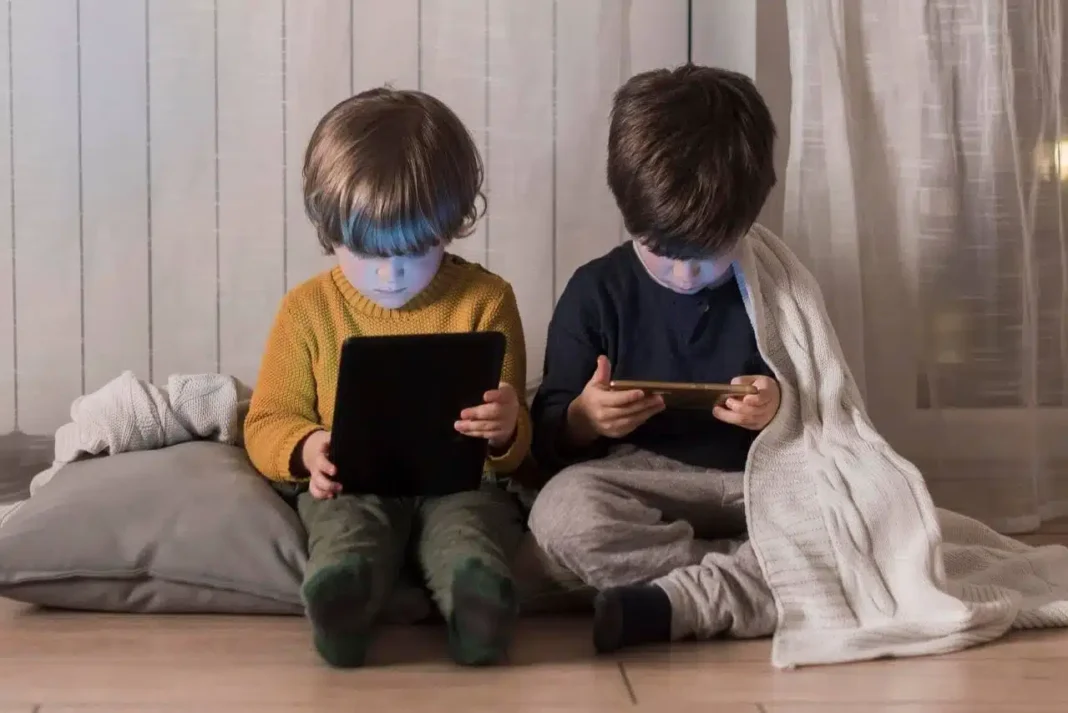It is now common to see children spending hours in front of television screens, holding tablets, or playing video games. Yet, many parents ask the same question:
“Why does my child seem angrier after watching TV or playing games?”
This question has been at the center of psychological and clinical research for decades. Media exposure is not just entertainment for children; it also shapes how they learn, regulate emotions, and express behavior.
Violence in Media and Learned Behavior
Albert Bandura’s classic Bobo Doll Experiment (1961) showed that children can learn aggressive behaviors simply by observing adults. Since then, a vast body of research has confirmed that violent media exposure works in a similar way.
For example, Huesmann and Eron’s longitudinal studies (1977–1995) demonstrated that children exposed to violent television were more likely to display aggressive behaviors as adults. Similarly, Robertson et al. (2013) found in a New Zealand cohort that children who watched more television between ages 5 and 15 were more likely to develop antisocial behaviors in early adulthood.
Video Games: More Than Just Fun?
Violent video games have drawn particular attention in recent years. A well-cited meta-analysis by Anderson and Bushman (2001) showed that such games can increase aggressive thoughts, feelings, and behaviors while reducing prosocial tendencies.
More recently, Prescott, Sargent, and Hull (2018) in PNAS confirmed these findings, reporting that violent video games were significantly associated with higher levels of physical aggression, especially in boys. A 2019 study in Cyberpsychology focusing on 6–7-year-old children also showed increases in aggressive cognition and behavior following gameplay.
Is All Aggression Pathological?
It is important to note that not all aggression in children is pathological. Anger, frustration, and even certain aggressive expressions are developmentally normal, especially when children face competition or obstacles. According to the Frustration-Aggression Hypothesis (Dollard et al., 1939), blocked goals can naturally trigger aggressive responses.
However, research shows that violent media exposure amplifies these reactions, making them more intense, persistent, and sometimes relational (for example, excluding or insulting peers). Coyne (2016) found that relational aggression portrayed on TV was mirrored in adolescents’ social interactions over time.
Early Exposure, Long-Term Consequences
A recent Quebec longitudinal study (2023) revealed that children exposed to violent TV at ages 3.5–4.5 were significantly more likely to show aggressive and antisocial behavior at age 15. The effects were particularly strong for boys. This highlights how early media exposure can influence behavioral patterns well into adolescence.
Clinical Psychology Perspective: What Can Be Done?
Clinical psychology views aggression not only as an outcome but also as a signal of difficulties in emotional regulation. Media exposure can intensify these challenges, but with proper guidance, it can also be an opportunity to teach self-regulation.
Some recommendations for parents and educators include:
-
Focus on content as well as time: Prosocial programs and games can promote cooperation rather than aggression.
-
Co-view and co-play: Talking about what children see reduces blind imitation.
-
Teach emotional literacy: Helping children label feelings (“I feel angry when I lose”) lowers the risk of acting out.
-
Model calm behavior: Children learn regulation by observing adults.
-
Provide alternative outlets: Sports, art, and play therapy give children safe ways to release frustration.
Aggression in children is not caused by media alone. However, violent games and shows act as powerful amplifiers of frustration and anger. Clinical psychology reminds us of an important truth: Children do not just consume media, they internalize it.
By choosing healthier content, engaging in conversations about what children watch and play, and creating safe spaces for emotional expression, we can help shape not only their current behavior but also their future relationships.
References
-
Anderson, C. A., & Bushman, B. J. (2001). Effects of violent video games on aggression. Psychological Science, 12(5), 353–359.
-
Bandura, A. (1961). Bobo Doll Experiment.
-
Coyne, S. (2016). Effects of relational aggression in media. Journal of Youth and Adolescence.
-
Huesmann, L. R., & Eron, L. D. (1995). Developmental Psychology.
-
Prescott, A. T., Sargent, J. D., & Hull, J. G. (2018). Meta-analysis of violent video games. PNAS.
-
Robertson, L. A., McAnally, H. M., & Hancox, R. J. (2013). Childhood TV viewing and antisocial behavior. Pediatrics.
-
Quebec Longitudinal Study (2023). PubMed.



